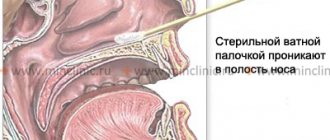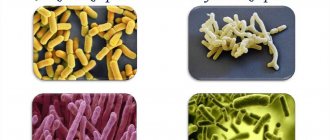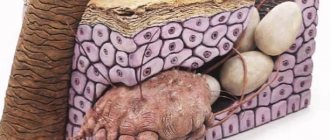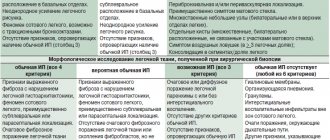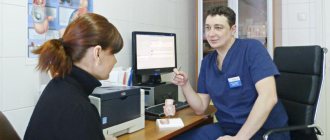Cruise sickness: noroviruses
One of the popular types of vacation today is traveling on a cruise ship. Sun, waves, inspiring landscapes. And “sea sickness” on modern ships is very rare. However, the “sea idyll” is still not as safe as it seems. Since a crowd of people in a limited space carries the risk of rapid spread of viral intestinal infections.
Norovirus
The virus got its name in 1968 from the area in which it was first recorded - Norwalk, Ohio. Then he caused an outbreak of acute gastroenteritis among students at one of the local primary schools. And today, according to statistics, norovirus is the cause of about 90% of all gastrointestinal epidemics of a non-bacterial nature.
The virus is extremely contagious (infectious) - only 10 viral particles are enough to cause infection. Whereas for infection with rotavirus it is necessary 10 times more.
The high contagiousness, viability and resistance of norovirus to the action of disinfectants in normal concentrations creates the preconditions for norovirus epidemics. And the main mechanism of transmission is fecal-oral.
Source
The reservoir and source of infection are infected people, both with severe symptoms and asymptomatic carriers. The latter, of course, pose a great epidemic danger because they release the virus into the environment without knowing it.
The disease develops within 12-48 hours of infection, and at the same time the maximum release of the virus is observed. It can last up to 45 days (on average 28) after the complete disappearance of symptoms, and in patients with immunodeficiency it can last up to 120-180 days.
Symptoms and immunity
The disease most often occurs as acute gastroenteritis, the main symptoms of which are:
- nausea,
- repeated vomiting,
- diarrhea,
- temperature increase,
- signs of intoxication: headache, weakness, chills.
The duration is usually no more than 2-5 days, and treatment consists of taking enterosorbents (enterosgel and others), antipyretics (if necessary) and restoring water and electrolyte balance (drinking regime, rehydron and similar drugs).
Like other viral infections, infection with norovirus is accompanied by the synthesis of specific antibodies. IgA in the intestines - block the introduction of the virus into cells, and IgG in the blood supports immunity for the next 9-15 months.
However, such immunity does not protect against other similar infections - rota-, astro-, adenovirus, the symptoms of which are most often indistinguishable from “norovirus”.
How to avoid bringing the virus to your loved ones
Due to the possibility of long-term asymptomatic shedding of norovirus, upon return from a sea voyage we recommend that you undergo testing for intestinal viruses. The OKI-test complex is an analysis of stool for 4 types of virus, as well as pathogens of dysentery and salmonellosis, which are widespread in tropical countries. The PCR technique makes it possible to detect even the minimum content of the pathogen in the material, and the readiness period is only 3 days.
Intestinal viral infections in children
Sologub T.V. – Professor, Honored Doctor of Russia, Chief Infectious Diseases Specialist of the Northwestern Federal District, Head. Department of Infectious Diseases of St. Petersburg State Medical Academy named after. I.I. Mechnikova, Doctor of Medical Sciences, Academician of MANEB.
Acute intestinal infections have been and remain one of the most important problems in both domestic and foreign infectology. Moreover, in the vast majority of cases, infectious diseases occurring with gastrointestinal tract syndrome are caused by viral agents. Thus, according to WHO, viral infections account for 70% of all acute intestinal infections, while the number of acute intestinal infections of bacterial etiology is no more than 30%. Rotavirus, according to various authors, is the cause of 20-60% of acute intestinal infections in children, and the incidence of norovirus infection ranks second in the structure of all acute intestinal infections and accounts for about 25% of cases.
Intestinal viral infections primarily affect young children (under 3 years of age), as well as people over 60 years of age. A number of authors note an increase in the number of cases of rotavirus infection, with a continuing trend towards underdiagnosis, however, the dynamics of incidence rates are not the same for different regions. Thus, in Moscow, according to the Federal Service for Surveillance in the Sphere of Consumer Rights Protection and Human Welfare, in the first half of 2007, there was a decrease in the incidence of rotavirus infection by 11.9% compared to the same period last year; in the first half of 2007, the number was 14. 67 per 100,000 population. The age structure of incidence corresponded to general trends. The highest incidence rates were recorded (in descending order) in the age group from 1 to 2 years, among children under 1 year of age and children from 3 to 6 years.
Etiology
The discovery of rotavirus occurred in 1973, and in 1979 the WHO officially approved its name, which comes from the Latin “rota” - wheel, due to the similarity of the viral particle to a wheel under microscopy.
Rotaviruses are divided into five groups: A, B, C, D, E, among which the main epidemiological significance is the rotavirus of group A. The virus is resistant to the action of conventional disinfectants, persists for a long time in the external environment, but is destroyed by boiling and treatment with strong acids and alkalis.
Norovirus was first discovered in 1972 in the US state of Norfolk, which is where its original name Norfolk virus came from. Previously, the disease caused by norovirus was associated with eating poor quality foods, in particular shellfish and other seafood.
The infection is widespread in the USA, Australia, Japan, Great Britain and other countries. According to various data, antibodies to norovirus are detected in 50-70% of the adult population in different countries.
Norovirus belongs to the calicivirus family. The virus is stable in the external environment and is easily transmitted through touch.
Epidemiology
Intestinal viral infections are widespread in all countries of the world. The source of infection is only a sick person; strains found in animals do not pose an epidemiological danger to humans. The transmission mechanism is fecal-oral, carried out by contact, water and nutritional routes. The possibility of transmission of infection by airborne droplets is currently being discussed, but is rejected by most authors.
Rota and norovirus infections are characterized by autumn-winter seasonality, the causes of which remain not fully understood. Apparently, these viruses are more stable in the external environment at low temperatures. In addition, in the winter months there are phenomena of immunodeficiency, which also favors the spread of the virus. Sporadic cases of the disease are also recorded in the summer.
Mostly young children are affected; among children over 11 years of age, the incidence decreases significantly and increases again in the age group of 60 years and older. It should be noted that in children under 6 months, especially those who are breastfed, intestinal viral infections are less common than in the age group from 6 months to 3 years, which is apparently due to the transfer of antibodies to the virus from mother to child and breast milk. In older children, with a decrease in immunity, the disease occurs much more often. The extremely high frequency of detection of antibodies to rotavirus in older children allows us to reliably state that by the age of four, up to 90% of children suffer rotavirus infection. Immunity is unstable, type-specific. Most children experience the infection more than once, with subsequent illnesses occurring in a milder form than the first.
Outbreaks of rota and norovirus infections are regularly recorded in different countries. Children attending preschool institutions especially often fall ill, which is apparently due to the fecal-oral mechanism of transmission of infection.
Pathogenesis
The entry point for infection is the gastrointestinal tract. Possessing “stickiness” to the cells of the mucous membrane of the villi of the small intestine, the virus actively multiplies. As a result of viral activity, the cells of the mucous membrane desquamate and are excreted in the feces. The tips of the villi become exposed and swell; Subsequently, the dead cells are replaced by functionally immature cells, which, in turn, leads to the occurrence of disaccharidase, mainly lactase, deficiency. As a result, there is an accumulation of unsplit disaccharides and an increase in osmotic pressure. In this regard, fluid and electrolytes are released, which ultimately leads to fluid loss.
Clinical manifestations
The following clinical variants of the course of intestinal viral infections are distinguished: gastric, gastroenteric, gastroenterocolitic, enteric and enterocolitic. The most common variant is the gastroenteric variant, less often the gastric variant.
The incubation period is 1-2, less often up to 4 days. The disease begins acutely, with a rise in temperature to 37.5-38.0 C, with more severe forms – up to 39 C and higher. An intoxication syndrome is noted, characterized by weakness, lethargy, and loss of appetite. Infants may develop a “marbled” skin pattern.
In the initial period of the disease, some authors note catarrhal phenomena: hyperemia and swelling of the pharynx, soft palate, injection of scleral vessels, rhinitis. Possible enlargement of the cervical lymph nodes. Subsequently, symptoms of gastrointestinal tract damage characteristic of gastroenteric syndrome occur: nausea, repeated vomiting, diarrhea, pain in the epigastric region. In a significant number of patients, pronounced rumbling is detected in the right iliac region.
The simultaneous appearance of all symptoms of gastrointestinal tract damage is characteristic. Only a small number of patients have diarrhea and vomiting on the second or third day of illness. In most cases, the disease occurs with gastroenteritis syndrome, less often with gastric syndrome.
Intestinal viral infections are characterized by copious foamy stools of a yellowish or greenish color, which later take on the appearance of “rice water” and resemble cholera stool. The frequency of bowel movements is rarely more than 10-12 per day. In mild forms of the disease, the stool may be mushy. Pathological impurities in feces, as a rule, are absent. The presence of these may indicate the presence of a mixed infection or be an indicator of the occurrence of enterocolitic syndrome (in approximately 20% of children).
It should be noted that the course of the disease varies in different age groups. Thus, in children under three months of age, intestinal viral infections are usually mild. In the group from 3 months to 2 years, a moderate course is observed. These patients have severe intoxication, and the gastrointestinal tract syndrome is of moderate severity. Children over 2 years of age are characterized by a milder and shorter course of the disease.
Diagnosis of this disease in newborns is difficult. Clinical signs include anxiety, screaming, refusal to eat, sudden weight loss, and rumbling in the right iliac region.
Dehydration (loss of fluid in the body) is characteristic of this disease, but it is rarely severe. Complications associated primarily with dehydration are rare.
Treatment
Specific antiviral therapy for rota and norovirus infections has not been developed. All patients, regardless of the severity of the disease, are recommended to be prescribed a low-lactase diet. At the same time, for children who are breastfed, the share of milk is reduced to 50%; for artificial children, a transfer to fermented milk or soy formula is carried out. Dairy-free porridge with water, vegetable and meat purees are used as complementary foods. Avoid foods containing large amounts of carbohydrates, in particular fruit purees and juices.
Pathogenetic therapy is used aimed at restoring fluid loss (rehydration). For the purpose of oral rehydration in mild forms of the disease, it is possible to use glucose-saline solutions (Rehydron, etc.); in moderate and severe forms, it is advisable to prescribe therapy with crystalloid solutions (Trisol, Acesol, Quartasol, etc.). Children from an early age can be prescribed Enterosgel, Smecta, Zosterin Ultra. The administration of prebiotics is useful in the treatment of patients with intestinal infections. Children from three years of age are prescribed Rekitsen-RD to detoxify the body. The drug Rekitsen-RD performs two complementary functions - it carries out an effective deep cleansing of the body and at the same time saturates the body with a large number of valuable biologically active substances included in its composition, which are selective nutrition for normal intestinal microflora. The drug restores digestion in diseases of the liver, stomach and intestines, normalizes stool, and eliminates heartburn. The effect of the drug is due to the fact that it binds and removes toxins of various origins from the body and normalizes stool consistency. Children are prescribed Rekitsen-RD 1 teaspoon three times a day 30 minutes before meals, or add it to food. In addition, in order to restore the intestinal microflora, you can use probiotics (Bifiform, Bifidumbacterin, Lactobacterin, Bactisubtil, Sporobacterin, Linex, Hilak Forte, Bifidum 791 BAG, Trilact, Ecoflor, etc.). Bifidum 791 BAG - live active bifidobacteria, 1000 pharmacopoeial doses in 1 vial. 10 ml, approved for newborns from the first day of life, does not contain preservatives or stabilizers. Trilact is a complex of live active lactobacilli. An effective means of preventing viral infections, influenza, a natural “antibiotic”, a powerful immunostimulant, a natural biosorbent. Ecoflor is a complex of living antagonistically active natural strains of bifidobacteria and lactobacilli fixed on the surface of the carbon-mineral sorbent SUMS-I, which protects bacteria as they pass through the acidic environment of the stomach and has high adsorption activity against toxins of various origins. SUMS - I ensures the removal of heavy metal salts from the body, selective adsorption of toxins, does not disturb the water-salt balance, does not weaken the tone of the intestinal muscles, does not remove enzymes, hormones, transport proteins, as well as hydrogen sulfide necessary for peristalsis. When the sorbent enters the intestines, bacteria detach from the sorbent. At the same time, they are in an active physiological state. This helps them populate the intestinal mucosa and significantly increases antagonistic activity.
Prevention
Specific prevention of intestinal viral infections has not been developed. Non-specific prevention measures include timely identification and isolation of infected children, thorough sanitary and hygienic treatment of common items, monitoring the quality of water and food in children's institutions.
All children who have had an intestinal viral infection are subject to medical examination and subsequent monitoring of virus shedding.
How to treat rotavirus and norovirus?
According to the doctor, treatment for both viruses is the same: symptomatic. “An intestinal infection, if caused by a virus, is treated symptomatically in 90% of cases. As an infectious disease specialist, I never prescribe antiviral drugs if I see that in front of me there is a patient with rotavirus or norovirus infection,” says Rusanova.
If the patient cannot drink on his own, infusion therapy is prescribed: intravenous drip administration of saline solutions. If a person can drink water, then he is given special saline solutions, and absorbents may also be prescribed. “Both viruses most often affect young children, but adults who care for them can also become infected,” the doctor warns.
What are the symptoms of rotavirus and norovirus?
The symptoms of the diseases are very similar. “They are manifested by high fever, severe intoxication, weakness, abdominal pain, bloating, loose stools, nausea, and repeated vomiting,” says infectious disease specialist at Infectious Diseases Clinical Hospital No. 1 in Moscow Sofia Rusanova .
According to Rospotrebnadzor, the incubation period for rotavirus is from 15 hours to 7 days. With rotavirus infection, a person often experiences cramping pain in the lower abdomen, he may begin to vomit (usually it stops by the end of the first day of the acute period) and diarrhea. Headache, muscle weakness, dizziness and, in children, fever may also be present. Rotavirus infection manifests itself quickly: symptoms reach their maximum development after 12-24 hours, and in general the disease can last from 3 to 10 days.
With norovirus, the first symptoms appear 15-48 hours after infection. This also includes acute diarrhea, nausea and vomiting, headache, and there may also be fever and symptoms of acute respiratory infections. The disease begins with a sharp rise in temperature, followed by vomiting and diarrhea. Signs of the disease disappear after 12-72 hours.
Microbes of the future. What new epidemics threaten humanity? Read more
A comprehensive molecular genetic study to identify and differentiate the most common pathogens of acute intestinal infections (AI) - group A rotaviruses (Rotavirus), norovirus genotype 2 (Norovirus genotype 2), astroviruses (Astrovirus). The study allows us to identify the genetic material (RNA) of pathogens in feces and establish the etiology of the disease. These pathogens are the main cause of the most severe gastroenteritis in infants and young children, as well as in adults.
The analysis is qualitative - for each type of infection the result “detected/not detected” is given.
Synonyms Russian
Screening for intestinal infections: rotavirus, norovirus, astrovirus.
What biomaterial can be used for research?
Cal.
Research method
Real-time PCR.
How to properly prepare for research?
- The study is recommended to be carried out before starting antibiotics and other antibacterial chemotherapy drugs.
- Avoid taking laxatives, administering rectal suppositories, oils, limit (in consultation with your doctor) taking medications that affect intestinal motility (belladonna, pilocarpine, etc.) and drugs that affect the color of stool (iron, bismuth, barium sulfate), within 72 hours before stool collection.
General information about the study
Acute intestinal infections (AI) are a group of diseases caused by viruses, bacteria or parasites, which are characterized by a fecal-oral transmission mechanism. Common transmission factors for these infections are food, water, contaminated household items and dirty hands. The first symptoms appear several hours or days after infection; the onset is abrupt, with the appearance of frequent loose stools, vomiting, abdominal pain, and signs of intoxication (fever, chills, nausea). The disease can be group in nature and occur in several people who have consumed contaminated food or water.
According to official statistics, in Russia up to 65-67% of diseases in this group are acute intestinal infections of unspecified etiology. If the causative agent of the infection is unknown, the effectiveness of anti-epidemic measures is limited. The ratio of the frequency of detection of viral and bacterial pathogens varies at different ages: in children under 3 years of age, viral agents account for 80-90% of diseases, bacterial agents account for 10-20%; Among adult patients, the proportion of viral pathogens decreases to 30%.
Rotavirus infection is an acute viral disease transmitted by the fecal-oral route. Its causative agents are RNA-containing rotaviruses (Rotavirus). The source of infection is a sick person.
Rotaviruses are characterized by seasonality: they are most often infected during the cold season. The incubation period lasts from 15 hours to several days, the onset of the disease is acute, with nausea, vomiting, diarrhea, and sometimes fever. If the disease is not treated, dehydration and electrolyte and acid-base imbalance may be added. Although sometimes rotavirus infection is asymptomatic. After an illness, immunity is unstable, so a relapse is possible.
In accordance with foreign literature data, norovirus is the most common causative agent of outbreaks of acute respiratory infections of non-bacterial etiology. This feature is associated with a low infectious dose and high persistence in the environment. PCR is the “gold standard” in the clinical diagnosis of norovirus infections.
Norovirus is an RNA virus belonging to the Caliciviridae family that causes a gastrointestinal infection in the form of acute gastroenteritis. Noroviruses are classified into six genogroups: GI – GVI. In accordance with the established nomenclature, about 38 genotypes of these viruses are known. For humans, the most pathogenic noroviruses are GI, GII, GIV. According to modern literature data, the most common genogroup in human infection is genogroup GII. It contains up to 19 genotypes and genotypes GII.3, GII.6, GII.12 are associated with transmission of infection through food. Norovirus infection is a highly contagious disease and can occur in single cases, clusters and outbreaks. This pathogen is the cause of more than 90% of non-bacterial origin and about 50% of all cases of gastroenteritis. People of all age groups are susceptible to infection, but cases of the disease are more often described in school-age children and adults.
Despite their somewhat lower prevalence compared to rota- and noroviruses, astroviruses constitute a significant group of intestinal infections, which occur with colitis in a third of patients. Group A rotaviruses are the most common cause of sporadic acute respiratory infections in children, and DNA-containing adenovirus F (serotypes 40 and 41) often causes outbreaks of gastroenteritis in young children.
Astrovirus infection is an acute viral disease with fecal-oral transmission. Its causative agents are RNA-containing astroviruses (Astrovirus). The peak incidence occurs in the cold season. The incubation period is 3-4 days. The infection manifests itself in the form of acute gastroenteritis (general malaise, headache, nausea, diarrhea, slight fever, sometimes vomiting) and most often develops in children (especially under the age of 2 years), but can also occur in adults. It resembles a rotavirus infection, but is milder. The disease usually lasts no more than 5 days, does not require specific treatment and ends with recovery.
Often, astrovirus infection is asymptomatic. Isolation of the virus in feces occurs within 3 weeks from the moment of infection, so identification of the pathogen by PCR is recommended at this time.
To identify and differentially diagnose intestinal infections, cultural and molecular genetic methods are used to study the genetic material of the pathogen in feces and determine the concentration of specific immunoglobulins in the blood. PCR has an advantage over cultural methods due to the high specificity and sensitivity of the study. This analysis makes it possible to identify the causative agent of intestinal disease with 100% accuracy, and rapid diagnosis of acute intestinal infections helps to avoid unnecessary procedures and surgical interventions, start treatment in a timely manner and limit the source of infection.
What is the research used for?
- To establish the etiological factor of acute intestinal infection;
- for differential diagnosis of the causes of acute gastroenterocolitis (inflammation of the gastrointestinal tract).
When is the study scheduled?
- Establishment of the etiological factor of acute intestinal infection;
- differential diagnosis of the causes of acute gastroenteritis;
- differential diagnosis of the causes of acute diarrhea;
- for symptoms of viral gastroenteritis (abdominal pain, diarrhea, vomiting, flatulence, fever);
- simultaneous or sequential development of ACI in several family members, in children in a children's institution or in hospital patients;
- “exacerbation” of the symptoms of acute intestinal infection in a patient hospitalized with this diagnosis (nosocomial infection);
- according to epidemiological indications.
What do the results mean?
Reference values: not found.
Rotavirus A
Norovirus 2 genotype
Astrovirus
The results are analyzed using the software of the device used for PCR with real-time detection.
"Detected":
- the infection is caused by the corresponding pathogen.
"Not detected":
- absence of pathogen RNA in the test material;
- the level of RNA in the test material is below the detection limits of the method.
What is the difference between rotavirus and norovirus?
Rotavirus is a genus of double-stranded segmented RNA viruses belonging to the reovirus family. The appearance of viruses resembles a wheel with a wide hub, short spokes and a contoured rim, which is why they got their name (from the Latin “rota” - “wheel”). There are nine known types of rotaviruses, but humans can only be infected by three: A, B and C.
Norovirus, in turn, is one of the varieties of enteroviruses. It was first isolated by scientists from the USA in the city of Norfolk in 1972, and therefore received the name “Norfolk agent”.
Question answer
Will the regular flu vaccine help with intestinal flu? As infectious diseases doctor Sofia Rusanova explains, a non-specialist cannot distinguish between rotavirus and norovirus, since they manifest themselves in a similar way. However, these viruses have slightly different transmission routes. Norovirus is transmitted through the fecal-oral route (often through the consumption of unwashed fruits and vegetables), through household contact, and through water. In the case of rotavirus, this is also the fecal-oral route, that is, through dirty hands, household items and food products. Rotavirus can be transmitted by airborne droplets.
CAUTION: NOROVIRUS infection!
13.08.2020
Today, more and more often, given the height of the holiday season, children and adults are becoming ill with intestinal infections. Several types of viruses can cause intestinal infections in humans. Noroviruses are one of the causes of the disease.
Larisa Kharakhashyan, head of the infectious diseases department of the State Budgetary Institution RO "CSTO", a pediatrician of the highest category, says:
— Noroviruses were first discovered in 1972 in Norwalk, Ohio, USA, and were first called Norwalk virus. For some time, noroviruses and rotoviruses were not distinguished, and everyone was diagnosed with “rotovirus infection,” especially since the clinical manifestations of both intestinal infections caused by these pathogens are similar. Noroviruses, like rotoviruses, cause outbreaks of acute intestinal infections in public institutions, preschool institutions, secondary schools, hospitals, nursing homes, etc. According to statistics, 50% of cases of acute intestinal infections in adults and 30% in older children are caused by noroviruses. In young children, noroviruses are the second most common cause of acute intestinal infections, after rotaviruses.
The main routes of transmission of norovirus are:
- food, i.e. a person can become infected, for example, by eating unwashed vegetables and fruits;
- aqueous, when a person becomes infected by drinking a certain amount of liquid containing the virus;
- household contact, when the virus enters the body through unwashed hands, household items, dishes, etc.
People infected with norovirus are able to infect others during the height of the disease and over the next 2 days, but in some cases the viruses are released from the body up to 2 weeks after the onset of the disease.
The first symptoms of the disease appear 24-48 hours after infection. This can be one-time, but more often repeated vomiting, diarrhea, severe nausea, and fever. Norovirus most often causes diarrhea and severe vomiting, but sometimes it can only cause vomiting. Disorders of the digestive system may be accompanied by muscle pain, headaches and weakness. Symptoms of norovirus infection usually go away on their own within 12 to 72 hours. Like any intestinal infection, norovirus is dangerous in children due to the development of dehydration.
After illness, the body develops immunity to the virus, but for a very short period, about 8 weeks. After this period, a person can become infected with norovirus again and become ill. There are currently no vaccines for norovirus. Therefore, the main measures to prevent this infection are compliance with hygiene rules. This means washing your hands after returning from the street, washing all vegetables and fruits before eating.
If there is already a sick person in the house, then you need to be very careful about hygiene. At least once a day, it is necessary to treat all surfaces with which an infected person has come into contact: bed frame, bedside tables, bathrooms, wooden handles, etc. Even the smallest particles of dust containing norovirus cause illness. Larisa Egiyanovna emphasizes:
— The virus is very resilient: wet cleaning with conventional detergents and alcohol-containing products does not ensure its destruction; the virus is resistant to drying, freezing, heating up to 60 degrees and is killed only by chlorine-containing disinfectants. Dishes, washable items used by an infected patient, as well as toys (if the child is sick) should be washed with warm water with the addition of bleach.
All items that have been soiled with vomit must be washed immediately at a temperature of at least 60 degrees. Such observance of hygiene rules will help to avoid further spread of infection and re-infection of people.
But special attention should be paid to children, since babies very often pull various objects into their mouths. It's good if this happens at home and if these are clean toys. But it happens that this happens on the street, on the playground and in other places where no one can vouch for the cleanliness of an object taken into the mouth. This is why children often experience intestinal infections. In addition, children are often united in children's groups (kindergarten, school, club, children's camp, etc.), where the spread of any infection can occur quite quickly.
REMEMBER that the main protection against norovirus infection and other intestinal infections caused by viruses is not only personal hygienic preventive measures, but also timely seeking medical help in medical institutions, especially if it concerns CHILDREN!
Return to list
